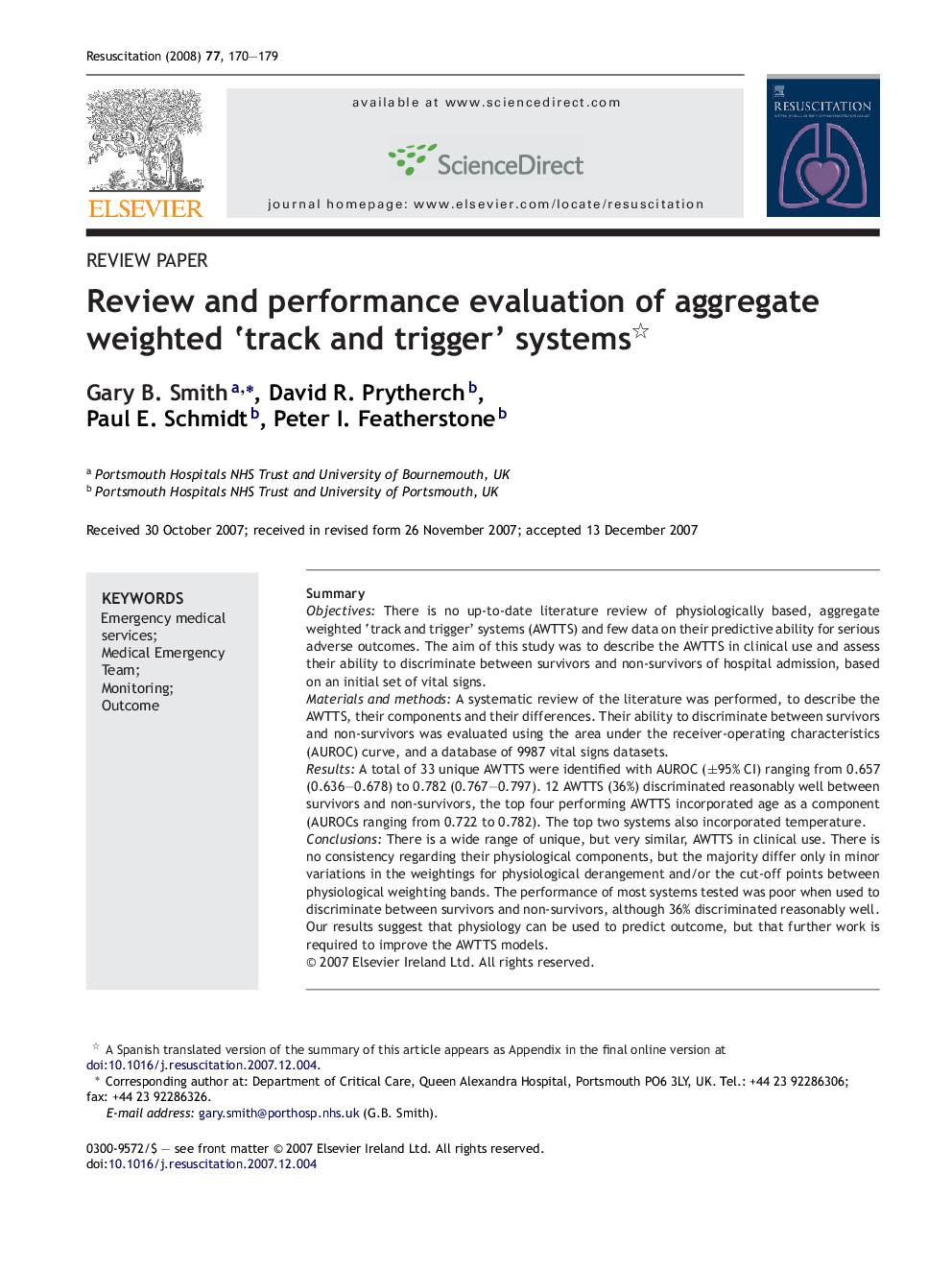| Article ID | Journal | Published Year | Pages | File Type |
|---|---|---|---|---|
| 3010525 | Resuscitation | 2008 | 10 Pages |
SummaryObjectivesThere is no up-to-date literature review of physiologically based, aggregate weighted ‘track and trigger’ systems (AWTTS) and few data on their predictive ability for serious adverse outcomes. The aim of this study was to describe the AWTTS in clinical use and assess their ability to discriminate between survivors and non-survivors of hospital admission, based on an initial set of vital signs.Materials and methodsA systematic review of the literature was performed, to describe the AWTTS, their components and their differences. Their ability to discriminate between survivors and non-survivors was evaluated using the area under the receiver-operating characteristics (AUROC) curve, and a database of 9987 vital signs datasets.ResultsA total of 33 unique AWTTS were identified with AUROC (±95% CI) ranging from 0.657 (0.636–0.678) to 0.782 (0.767–0.797). 12 AWTTS (36%) discriminated reasonably well between survivors and non-survivors, the top four performing AWTTS incorporated age as a component (AUROCs ranging from 0.722 to 0.782). The top two systems also incorporated temperature.ConclusionsThere is a wide range of unique, but very similar, AWTTS in clinical use. There is no consistency regarding their physiological components, but the majority differ only in minor variations in the weightings for physiological derangement and/or the cut-off points between physiological weighting bands. The performance of most systems tested was poor when used to discriminate between survivors and non-survivors, although 36% discriminated reasonably well. Our results suggest that physiology can be used to predict outcome, but that further work is required to improve the AWTTS models.
